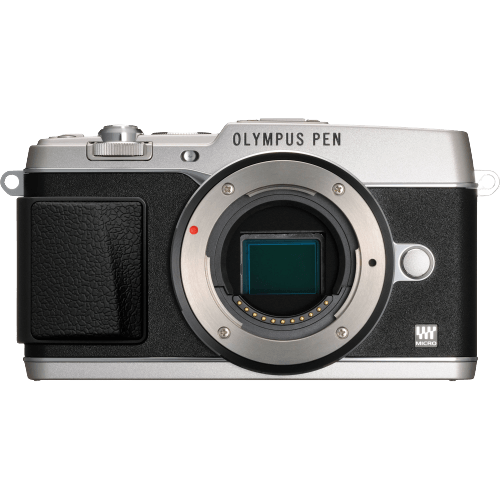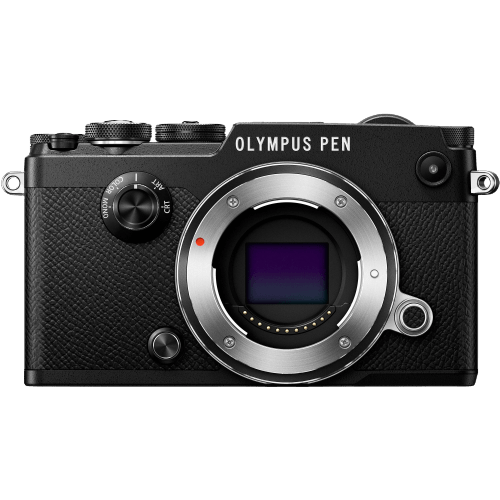Olympus PEN E-P5 vs PEN-F Comparison
Olympus PEN E-P5

Olympus PEN-F

The Olympus PEN-F takes the lead with a score of 60/100, while the Olympus PEN E-P5 follows closely behind with a score of 53/100. Both cameras are mirrorless and share similar dimensions, with the PEN-F measuring 125 x 72 x 37mm and the E-P5 at 122 x 69 x 37mm. The PEN-F is slightly heavier at 427g compared to the E-P5’s 420g.
The higher score of the PEN-F indicates its overall better performance. It was released in 2016 with a launch price of $1200, whereas the E-P5 was announced in 2013 and had a launch price of $1000. This suggests that the PEN-F offers more advanced features and improvements over the E-P5.
However, the E-P5 has its advantages too, such as its lower launch price and slightly lighter weight. This makes it a more budget-friendly and portable option for those who don’t require the latest features.
Taking all factors into consideration, the Olympus PEN-F is the superior choice due to its higher score and more recent release, providing better performance and features. On the other hand, the Olympus PEN E-P5 remains a viable option for those seeking a more affordable and lightweight camera without the need for the latest advancements.
Olympus PEN E-P5 vs PEN-F Overview and Optics
The Olympus PEN-F emerges as the winner in the optics comparison with a score of 65/100, while the Olympus PEN E-P5 scores 55/100. Both cameras share several common specifications, including Micro Four Thirds sensor size, Micro 4/3 lens mount, CMOS sensor type, and image stabilisation. These similarities ensure that both cameras provide a strong foundation for capturing high-quality images.
The PEN-F outperforms the E-P5 in several aspects. With 20.3 megapixels, the PEN-F offers higher resolution than the E-P5’s 16.1 megapixels, allowing for more detailed images. The shooting speed of the PEN-F is also slightly faster at 10 frames per second, compared to the E-P5’s 9 frames per second. Furthermore, the PEN-F boasts a newer TruePic VII processor, which contributes to improved image quality and processing speed. The DXOMARK score for the PEN-F’s sensor is 74, slightly higher than the E-P5’s score of 72, signifying better overall performance in the sensor department.
While the E-P5 lags behind the PEN-F in most aspects, it still offers solid performance as a Micro Four Thirds camera. Its 16.1-megapixel resolution and 9 frames per second shooting speed are respectable, and the TruePic VI processor is still capable of delivering good image quality.
Based on the comparison, the Olympus PEN-F is the superior camera in terms of optics, offering higher resolution, faster shooting speed, and an improved processor. However, the Olympus PEN E-P5 remains a viable option for those seeking a Micro Four Thirds camera with decent performance and image quality.
Olympus PEN E-P5 vs PEN-F Video Performance
The Olympus PEN-F outperforms the Olympus PEN E-P5 in terms of video capabilities, scoring 70 out of 100 compared to the E-P5’s score of 57. Both cameras share some common specifications, including Full HD video resolution, maximum video dimensions of 1920 x 1080, and built-in time-lapse functionality. However, there are notable differences that make the PEN-F a superior choice for video recording.
The PEN-F’s most significant advantage is its higher maximum video frame rate of 60fps, compared to the E-P5’s 30fps. This higher frame rate allows for smoother video playback and better slow-motion capabilities, making it more suitable for capturing fast-moving subjects or creating cinematic effects.
While the E-P5 does not have any specific advantages in video performance over the PEN-F, it still offers decent video capabilities for a compact camera. Its Full HD resolution and built-in time-lapse functionality are useful features for casual video recording and sharing. However, if video performance is a priority, the PEN-F is the clear winner due to its higher frame rate.
To sum up, the Olympus PEN-F is the better choice for video capabilities, thanks to its 60fps maximum video frame rate, which results in smoother playback and improved slow-motion options. The Olympus PEN E-P5, while lacking in comparison, still provides adequate video features for casual users. Ultimately, the choice between these two cameras for video recording depends on the importance of video performance in the user’s requirements.
Olympus PEN E-P5 vs PEN-F Features and Benefits
The Olympus PEN E-P5 and Olympus PEN-F both have a feature score of 57 out of 100. These cameras share several specifications, making it challenging to determine a clear winner. Both cameras have a 3-inch screen, touchscreen capabilities, no GPS, WIFI capabilities, and no Bluetooth.
Despite the identical feature scores, the Olympus PEN-F has some advantages over the Olympus PEN E-P5. The most notable advantage is the flip screen, which allows users to take photos from various angles and positions. Additionally, the Olympus PEN-F has a slightly higher screen resolution (1,037,000 dots) compared to the Olympus PEN E-P5 (1,036,800 dots). These differences suggest that the Olympus PEN-F may provide a better user experience when it comes to framing and reviewing shots.
On the other hand, the Olympus PEN E-P5 does not offer any significant advantages over the Olympus PEN-F. Both cameras share the same features and specifications, with the exception of the flip screen and slight difference in screen resolution. This means that the Olympus PEN E-P5 does not have any unique features that make it a better choice than the Olympus PEN-F.
Based on the comparison of features, the Olympus PEN-F is the better camera due to its flip screen and marginally higher screen resolution. While the Olympus PEN E-P5 does not offer any notable advantages, it remains a viable option for users who do not require a flip screen. Ultimately, the choice between the Olympus PEN E-P5 and Olympus PEN-F will depend on the individual user’s preferences and needs.
Olympus PEN E-P5 vs PEN-F Storage and Battery
The Olympus PEN E-P5 and Olympus PEN-F tie in storage and battery with a score of 21/100 each. Both cameras have one memory card slot, accepting SD, SDHC, and SDXC cards. They also share the same battery life of 330 shots per charge. Neither camera offers USB charging.
However, the battery types differ: the E-P5 uses a BLN-2 battery, while the PEN-F uses a BLN-1 battery. This difference does not affect the overall performance or battery life.
Since both cameras have the same storage and battery score, neither emerges as a clear winner in this category. Both the Olympus PEN E-P5 and PEN-F offer similar storage and battery capabilities, making them equally suitable for users prioritizing these aspects.
Olympus PEN E-P5 vs PEN-F – Our Verdict
Are you still undecided about which camera is right for you? Have a look at these popular comparisons that feature the Olympus PEN E-P5 or the Olympus PEN-F:

